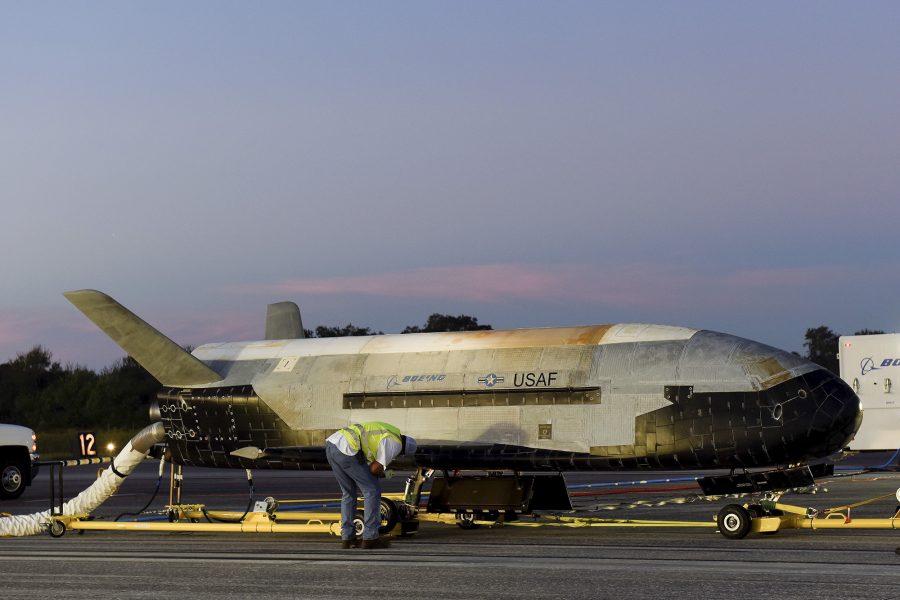X-37B is an unmanned experimental Orbital Test Vehicle (OTV) aimed at developing and maturing a reusable space-launch capability and conducting classified, extended, on-orbit missions/experiments and/ or launching small satellites.

NASA launched the X-37 program in 1999, with the intention of building two demonstrators to validate technologies for both launch/on-orbit flight, and reentry/landing. Only the Approach and Landing Test Vehicle (ALTV) was built before NASA handed over the program to DARPA, which completed ALTV captive-carry/drop testing with the subscale X-40A in 2006.
The X-37B is based on NASA’s notional OTV and is boosted into low Earth orbit atop a standard Atlas V or SpaceX Falcon 9 launch vehicle for long-endurance space missions. The vehicle autonomously re-enters the atmosphere upon command from a ground control station, and it recovers conventionally to the runway.
X-37 launches from Cape Canaveral and lands at either Cape Canaveral or Vandenberg. Development includes advanced guidance, navigation and controls, avionics, thermal-resistant materials, propulsion, and autonomous control systems.
The program’s two test vehicles have successfully completed five orbital missions. The first mission (OTV-1) launched in 2010 and remained on orbit 224 days. The OTV-2 and OTV-3 missions launched in 2011 and 2012, and remained on orbit 468 days and 674 days, respectively. The OTV-4 mission remained aloft for 718 days and landed at Cape Canaveral for the first time on March 25, 2017.
The OTV-5 mission marked the type’s first launch atop a SpaceX Falcon 9 on Sept. 7, 2017, setting a new record of 780 days on orbit when it touched down at Cape Canaveral on Oct. 27, 2019. USSF launched its inaugural X-37B mission, OTV-6 (USSF-7), on May 17, 2020.
Contractor: Boeing.
Operator: USSF.
First Launch: April 22, 2010.
IOC: N/A.
Launch Vehicle: Atlas V, Falcon 9.
Production: Two.
Inventory: Two.
Operational Location: Cape Canaveral SFS, Fla. (launch/landing); Vandenberg SFB, Calif. (landing).
Active Variant: •X-37B. DARPA/USAF-developed Orbital Test Vehicles.
Dimensions: Span 14 ft, length 29.25 ft, height 9.5 ft.
Weight: 11,000 lb at launch.
Propulsion: Single liquid-propellant rocket motor.
Endurance: 780+ days on orbit.
Orbit Altitude: Low Earth orbit (LEO) at 110-500 miles.
Power: Gallium arsenide solar cells with lithium-ion batteries.
